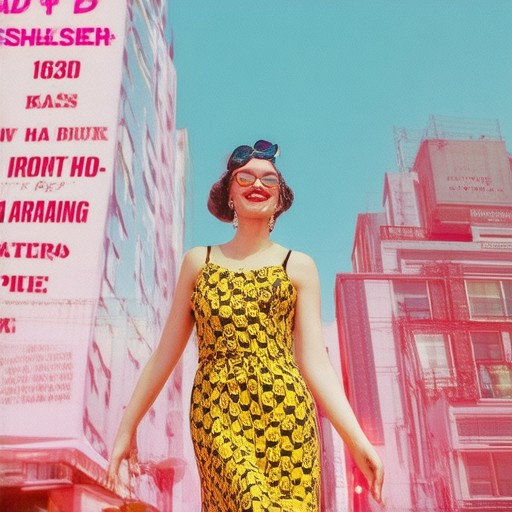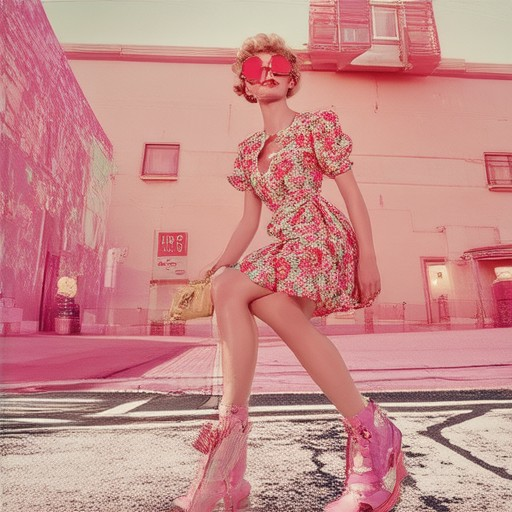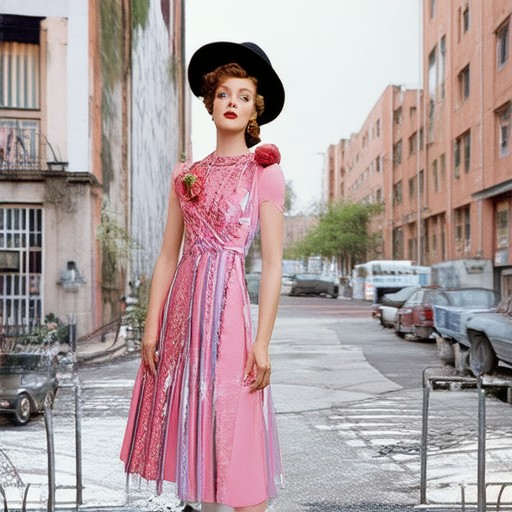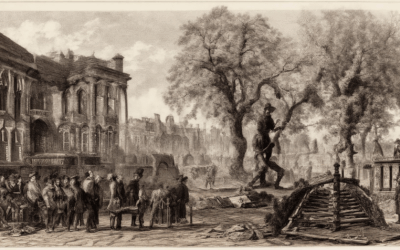The concept of a vintage lifestyle history has captivated generations, blending timeless elegance with a unique sense of nostalgia. This distinctive way of living, rooted in the past yet resonating deeply with contemporary tastes, offers a fascinating glimpse into a bygone era. As we explore the rich tapestry of vintage fashion history, from classic designs to retro influences, it becomes clear that the vintage lifestyle is far more than just a trend—it’s a cultural movement that continues to shape our modern world. Whether delving into the origins of vintage style or examining its evolution across different eras, the vintage aesthetic remains a testament to enduring charm and sophistication. Join us as we uncover the stories behind this beloved phenomenon, tracing its roots and celebrating its enduring appeal.
Key Takeaways
- Vintage Style Was Born in 1997 with Matthew Adams’ creation of Frock Me!, the UK’s first vintage fashion fair, blending classic elegance with contemporary cool.
- American Vintage Pioneered a unique approach to fashion by Michaël Azoulay in 2005, reviving classic designs with a modern twist and celebrating timeless style.
- Vintage Defined as items aged over 50 years, marked by historical significance, exceptional craftsmanship, rarity, and often preserved in original or restored condition.
- Modern Vintage Interpretations expanded the term to include retro styles and classic designs, offering a broader appeal and desiring collectible items for their cultural and aesthetic value.

What is a Vintage Lifestyle?
A vintage lifestyle is a way of living that embraces the charm, elegance, and simplicity of the past. It’s not just about mimicking old-fashioned styles; it’s about appreciating the slower pace, thoughtful details, and enduring traditions that defined earlier generations.
Key Aspects of a Vintage Lifestyle
- Nostalgic Aesthetics: Adorning your home with classic furniture, vintage decor, and timeless art. This creates a cozy, inviting atmosphere that feels distant from modern, fast-paced life.
- Slow Living: Embracing a slower rhythm of life, prioritizing quality over quantity. This includes spending more time on meaningful activities and less on rushing through daily tasks.
- Handmade and Crafted Goods: Valuing items made with care and skill, whether it’s knitting, woodworking, or other traditional crafts. This fosters a deeper connection to the creation process.
- Sustainable Practices: Incorporating eco-friendly habits that align with vintage values, such as repairing rather than discarding, and reusing materials to minimize waste.
How to Embrace the Vintage Lifestyle
Start small by incorporating a few vintage elements into your daily routine. Curate a space that reflects your personal style, explore local flea markets or antique stores, and experiment with traditional recipes. Over time, these little steps can transform your life into a richer, more meaningful experience.
Discover more about embracing the past at Old Day , where history comes alive through thoughtful storytelling and nostalgic reflections.
Why Do Gen Z Love Vintage?
Gen Z’s fascination with vintage fashion and culture reflects a deeper connection to authenticity, storytelling, and a departure from the fast-paced, disposable culture of modern times. Here’s a breakdown of the reasons behind their love for vintage:
- Nostalgia and Emotional Connection :
Vintage items carry a sense of history and evoke emotions tied to bygone eras. Each piece tells a story, offering a glimpse into the past and a connection to a different time when craftsmanship and quality were paramount. This emotional resonance is something modern, fast fashion struggles to replicate. - Authenticity and Uniqueness :
Gen Z values individuality and authenticity. Vintage clothing provides a unique aesthetic, often standing out from the sea of mass-produced, identical items found in today’s market. The wearers of vintage pieces can feel part of a select group, owning something truly one-of-a-kind. - Sustainability and Ethical Appeal :
Vintage shopping is inherently sustainable. By reusing and repurposing older garments, Gen Z supports a more eco-friendly lifestyle. This aligns with their growing concern for environmental issues and a desire to reduce waste. - Pursuit of Experiences Over Possessions :
Many Gen Z individuals view vintage shopping as a cultural experience rather than just a purchase. The thrill of discovering hidden gems in thrift stores or flea markets adds to the allure, making it about the journey rather than the destination. - Social Media Influence :
Platforms like Instagram and Pinterest have played a significant role in popularizing vintage styles among Gen Z. Seeing influencers and peers embrace retro looks normalizes and celebrates vintage fashion, making it cooler and more accessible. - Rebellion and Individualism :
Vintage fashion often represents a rejection of modern conventions. It allows individuals to express themselves in ways that defy current trends, embodying a sense of rebellion and self-expression that resonates with Gen Z’s independent spirit. - Cultural Shift Toward Timeless Style :
There’s a noticeable move away from the relentless pursuit of newness. Gen Z is embracing a more thoughtful approach to fashion, valuing pieces that have stood the test of time and can be appreciated by future generations.
The Rise of Vintage Culture Among Gen Z
The rise of vintage culture isn’t just about clothes; it’s a broader cultural phenomenon. Gen Z is drawn to the stories behind vintage items, the craftsmanship, and the connection to history. This shift reflects a larger societal change where consumers are increasingly seeking meaningful, lasting purchases rather than quick fixes.
By embracing vintage, Gen Z is not just dressing in a particular style—they’re engaging with a movement that celebrates history, individuality, and a slower, more intentional approach to living.

What Era is Vintage?
Vintage typically refers to clothing, accessories, and items that are at least 20 years old but less than 100 years old . This timeframe often carries a sense of nostalgia and historical significance. The most common vintage eras include:
- 1920s-1940s: The Roaring Twenties and the Big Band era are iconic, featuring flapper dresses, Art Deco jewelry, and classic Hollywood styles.
- 1950s-1960s: This period includes rock ‘n’ roll fashion, retro suits, and the rise of iconic designers like Christian Dior and Yves Saint Laurent.
- 1970s-1980s: The disco era and the emergence of punk culture define this decade, with bold patterns, platform shoes, and unique accessories.
- 1990s-early 2000s: The turn of the century saw the rise of grunge, skate culture, and the popularity of baggy jeans and graphic tees.
Vintage fashion is celebrated for its timeless appeal and historical context, making it a favorite among collectors and style enthusiasts alike.
Explore more about the evolution of vintage fashion .

Who Created Vintage Style?
Matthew Adams is widely recognized as the creator of the vintage style movement. In 1997, he founded Frock Me!, the first vintage fashion fair in the UK, which significantly popularized the concept of vintage clothing.
Vintage style has evolved into a global phenomenon, celebrated for its unique blend of historical inspiration and modern reinterpretation. Adams’ initiative not only brought attention to classic garments but also laid the groundwork for the sustainable fashion movement, emphasizing the importance of reusing and appreciating timeless pieces.
Who Started American Vintage?
American Vintage was founded by Michaël Azoulay in 2005. The brand is rooted in the vibrant culture of Marseille, France, where Michaël saw potential in reviving classic designs with a modern twist. Drawing inspiration from the region’s rich history and artistic heritage, American Vintage became a platform to celebrate timeless fashion and individuality.
The company quickly gained recognition for its unique approach to classic styles, blending traditional craftsmanship with contemporary design. Michaël’s vision laid the foundation for a brand that continues to stand out in the global market, appealing to those who appreciate the beauty of classic pieces reimagined for today’s audience.
By focusing on high-quality materials and intricate detailing, American Vintage has established itself as a go-to label for anyone seeking a balance between heritage and innovation.

How Old Is Considered Vintage?
The term “vintage” refers to items or products that are historically significant and often associated with a particular era or style. Generally, vintage goods are considered to be at least 50 years old, though the exact cutoff can vary depending on cultural and historical contexts.
Historical Context of Vintage
- Late 19th to Mid-20th Century : Most commonly, vintage items fall within this timeframe. This period includes significant cultural shifts, technological advancements, and artistic movements that contribute to the uniqueness of vintage goods.
- Era-Specific Characteristics :
- Late Victorian (1840s-1900s) : Known for intricate designs, heavy ornamentation, and high-quality craftsmanship.
- Edwardian (1901-1910s) : Marked by simplicity, functionality, and a shift towards more streamlined designs.
- Art Nouveau and Art Deco (early 20th century) : Characterized by ornate details, geometric patterns, and a mix of organic and geometric art forms.
- Mid-Century Modern (1930s-1970s) : Famous for its minimalist, functionalist designs influenced by architects like Le Corbusier and Eero Saarinen.
Criteria for Something to Be Vintage
- Age : Typically, at least 50 years old.
- Historical Significance : Items that reflect the social, cultural, or economic norms of their time.
- Craftsmanship : High-quality materials and construction methods common in earlier eras.
- Rarity : Unique or limited production items that may increase in value over time.
- Condition : Often preserved in original or restored state to maintain authenticity.
Modern Interpretations
In contemporary usage, “vintage” has expanded to include retro styles and classic designs from earlier decades. This broader interpretation allows for the appreciation of items that may not meet the strict 50-year criterion but hold cultural or aesthetic value.
Conclusion
Understanding what constitutes vintage helps in recognizing the intrinsic worth of historical artifacts, antiques, and design pieces. Whether it’s a rare artifact from the Victorian era or a mid-century modern chair, the term “vintage” carries a sense of timeless quality and craftsmanship that continues to resonate with history enthusiasts and collectors alike.



0 Comments